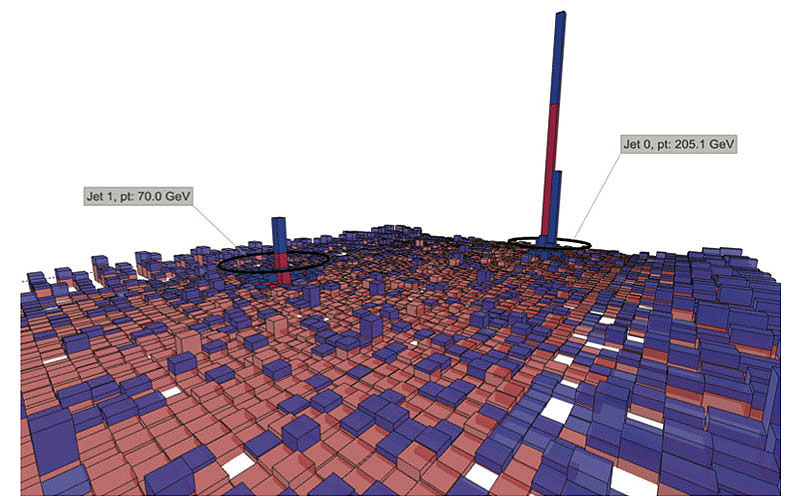
INSTITUTE FOR NUCLEAR THEORY
News
Home | Contact | Search | News archive | Site Map

|
INSTITUTE FOR NUCLEAR THEORY News
Home | Contact | Search | News archive | Site Map |
|||||
|
Precision Spectroscopy of QGP Properties with Jets and Heavy Quarks May 1 - June 8, 2017 Reported by S. Bass, A. Majumder, J. Putschke, and L. Ruan Date posted July 25, 2017 |

Data taken at the Relativistic Heavy Ion Collider (RHIC) since the year 2000 have
shown conclusively that the high temperature phase of QCD matter is a quark-
gluon plasma with the characteristics of a "nearly perfect" liquid. This finding has
been confirmed by measurements in Pb+Pb collisions at much higher energy at
the CERN Large Hadron Collider (LHC). The RHIC and LHC experiments have
not only shown that the quark-gluon plasma behaves as a nearly inviscid liquid,
but also that it is highly opaque to energetic partons, resulting in strong jet
quenching. The physics goal for the next decade is to characterize the properties
of this quark-gluon plasma liquid by quantitative extraction of important medium
parameters from precision measurements of sensitive observables. The
proposed INT program focused on the utilization of jets and heavy-quarks, since
these are the two areas with the largest amount of progress in the past 5 years in
terms of experimental capabilities, data taken and theoretical tools developed.
Both, jets and heavy quarks, are hard probes that are being produced early on in
the time-evolution of heavy-ion collisions in processes that are well described
using perturbative QCD. They interact strongly with the surrounding QGP
medium, and their measurable final state distributions yield significant information
on the properties of the QGP medium, including its transport coefficients.
|